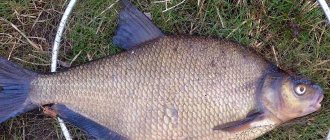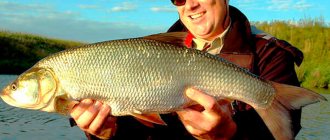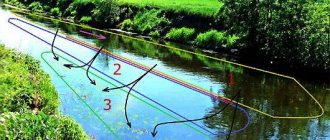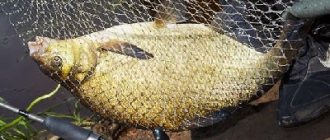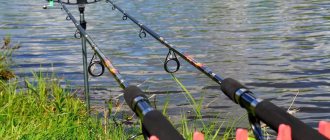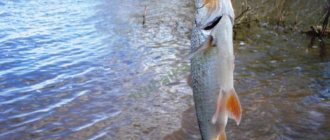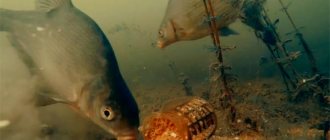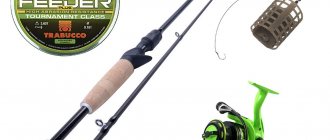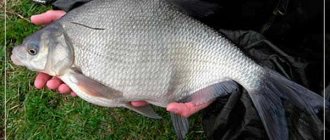Which feeder to choose
In my opinion, when selecting a fishing rod, we take one feeder for a reservoir, and another for a river. I won’t even talk about several feeders for different distances. For a large reservoir, the so-called “catapult stick” is suitable in common parlance, a long, long-range feeder. Feeders with a height of 3.9 and 4.2 meters are suitable, but feeders with a height of 3.6 are also suitable, and the universal test for such conditions is 100 grams of lead. It will be easier with a river, and any feeder for bream can be used, within reason, of course. I like poles up to 120 grams, in heights of 3.6 and 3.9 meters. I’ll say right away that first of all, select a feeder that suits your wallet, and don’t forget about spare parts and quivertypes.
I think we’re done with feeders, we took as a basis an amateur who is not ready to spend a lot on fishing, but at the same time wants to catch the coveted bream. An example of such a feeder would be Volzhanka Optima 3.9, Zemex Iron 3.9, Black Hole Huper 3.9, with various test indicators.
Coil selection
Flagman Force Active 5000 reel
The reel also plays an important role when equipping a feeder rod for bream. The main thing is that it is reliable at a crucial moment. After all, situations on the river are different, the treasured trophy will visit everyone, it’s a matter of approach and time. Since we are fishing at long ranges or in strong currents, we will need a high-torque reel. Reels with a gear ratio of 4.7.1 are suitable, but this does not mean that only those will do. For example, I use reels from Flagman, specifically Force Active in size 5000. They have been working for the second season, and for a second this is more than a hundred fishing trips a year.
Groundbait for feeders
An important component of fishing with a feeder from a boat or from the shore is bait; without it there is no point in building such gear. Porridge for bream in a feeder can be different, there are the following varieties:
- purchased mixtures with dry or moistened form;
- self-prepared kind.
If the fishing turned out to be spontaneous, it’s easier to go to the store and buy a prepackaged type of food. Experienced fishermen recommend doing it yourself. Bait for bream at home does not take long to cook, but in terms of efficiency it will be much better than store-bought bait.
Requirements for bait
Feeding on a ring for bream fishing is no different in its performance from porridges for other types of feeders. The main requirements for bait are:
- when finished, the color of the complementary food should not contrast with the soil at the bottom of the reservoir;
- the feeding porridge is more crumbly, this will help it fall out of the feeder faster;
- the bait in the fishing trough is more viscous;
- The food must contain bait ingredients;
- the food must have a smell.
Ingredients and flavors may vary depending on time of year and weather conditions.
In cold water in early spring and with the onset of autumn cold, bait for bream at home is made with the addition of animal particles. The summer heat will change the preferences of the fish; at this time of year, vegetable baits will work better.
Groundbait recipes
Most baits are universal; they are used not only for ringing bream. Carp and crucian carp will also appreciate such homemade options.
To catch bream with a ring, everyone has their own complementary feeding recipe; you can change some ingredients, replace some components. Do-it-yourself bream porridge cannot be prepared quickly, but there are options that do not require much time:
- A kilo of cookies is turned into fine crumbs, 100 g of breadcrumbs, twice as much sunflower seed cake, and 100 g of rolled oats flour are added. Everything mixes well, you can add anise oil if desired.
- A feeder for catching peaceful fish on a river or lake is filled with the following composition: a kilo of cooked millet porridge is mixed with a large can of canned corn. In cold weather, chopped maggots, worms, and bloodworms are added to the mixture.
- A simple recipe for ringing would be a mixture of equal amounts of crushed cookies and sunflower cake. For the bunch, add a glass of semolina. Half a kilo of mixed feed or any boiled porridge will be an excellent base for kneading.
The well-known Salapin porridge will be an excellent option for bream fishing in the current. Every self-respecting fisherman knows her recipe.
Options for feeder equipment for bream
Let's go over the feeder rig for bream, and since I often participate in sports competitions, I fish with only one permitted rig - In-Line. They are also called Raning Rig, the differences between them are minor. With such equipment, bream can easily survive in the event of a break or shooting of the tackle, which is humane to the fish. Probably everyone pulled out old grandfather’s springs from the water, on which underwater inhabitants were already in different conditions.
In-Line is a sliding feeder installation, and it will take one minute to do it. To do this, you will need a swivel with a carabiner and one small bead, preferably black. Installation can be improved with a tap. When retracting, the installation is practically not confused. It is better to make a bend from twisting a thicker fishing line (0.22 - 0.30 mm) or it is worth using beaded rubber if fishing is carried out on thin leashes.
Sometimes I still use montages such as paternoster, helicopter and two knots. Installing a paternoster will be the easiest and most effective for fishermen who are just starting to master feeder fishing for bream. Such equipment for bream shows every bite, and most importantly, it is “self-hooking”, that is, the fish sits on the hook on its own. All that remains is to throw the tackle, but this does not always happen.
In a paternoster, the main thing is to catch the moment with the hanging loop, the loop should be below the level of the feeder, then there will be much less confusing moments.
A helicopter and two units - this option for feeder equipment is not the simplest, but not complicated either. In my opinion, such an installation for a feeder will be extremely effective only in strong currents, and I would not recommend that amateurs start with it. Paternoster and In-Line are much better suited for catching bream.
Popular methods of installing feeder equipment
- Paternoster. This rigging method is necessary for rough terrain. The paternoster copes better with snags and other complications of the bottom surface than other equipment. To install it, you need a main line of large diameter and an additional line of a more modest cross-section. A small loop is attached to the end of the main line, in which the leash is fixed. Above this structure is placed a feeder attached to a thin leash. The advantage of the paternoster is that when fighting, the bream, as a rule, tries to go deeper, entangling the gear among the snags, which leads to the line breaking.
- Helicopter and two knots. An excellent solution for fishing in a body of water with a current. For installation, you need a piece of fishing line with a cross-section of 0.25 millimeters and a length of 1 meter. You need to fold the fishing line in half and tie a knot at the 15th centimeter. Then, at a distance of 1 centimeter, another knot is placed. It turns out to be a large loop in which the feeder is fixed, and a leash is placed between the knots tied with a cape. Thanks to this design, the current creates rotation of the leader, which can lead to self-hooking.
- Asymmetrical. Features a high level of sensitivity. For installation, you need to take half a meter of fluorocarbon fishing line and tie a loop 15 centimeters long. This loop is called the main loop and is attached to the main line. A feeder is attached to it and moves along its entire length without any problems. The leash is placed in the same way. It is important to make the length of the leash a little longer than that of the feeder. This type of tackle is sensitive and does not allow the fish to feel the weight of the feeder.
Line or cord depending on fishing conditions
When assembling feeder gear for bream, I use both fishing line and cord, but in different conditions. It is better to fish with fishing line at short distances, during periods of negative temperatures, in the summer when there is an abundance of poplar fluff, and also in the spring when there is a strong flood. It is worth considering that the fishing line stretches well and it is difficult to break through it, so I want to pay attention to special feeder fishing lines. I use fishing lines from Dunaev Feeder Match.
Line Dunaev Feeder Match
The cord will be relevant at any time; it is difficult to replace it with fishing line, so it is better to purchase a cord first. I don’t recommend beginners to take thin diameters, I think 0.12 - 0.14 mm is enough, but cheap Chinese cords “plus” a lot and it’s worth making allowances for this.
Choosing a feeder on a river and reservoir
In fishing stores, the choice of feeders is huge, we’ll take a look and weed out what you need and what you shouldn’t take. We immediately abandon square feeders, and take round ones in their place. If we are considering feeder fishing on a reservoir, and specifically the long range of 50–60 meters, it is worth purchasing “nozzles” and “Serbian bullets” because of the shifted center of gravity, they fly well even in strong side and head winds. Suitable weights from 40 to 80 grams, different feeding capacity.
For the river, heavy-duty feeders with lugs are suitable, which are very useful in strong currents. The weight range of bream feeders depends on the strength of the current, namely 60 - 140 grams. Feeder feeders are a consumable item, and you don't need to worry too much about a few feeders that will remain on the bottom of the river. I tear them off often and it's part of the process, if you can call it that.
Feeder leashes and hooks
The feeder equipment for catching bream must include a leash. Prepare leashes in advance at home, for example, in a leash for a feeder, or you can tie them on a regular sponge. It is better to select the optimal leash length and hook number directly on the pond. This choice depends on the period of activity of the fish, species composition, size of the fish, bait and much more.
At the reservoir I use leashes 30-50 centimeters long, this is enough for catching bream and bream. When catching bream with a feeder on the river, it becomes more and more difficult, and I start working with leashes 70 centimeters long, sometimes the length reaches one and a half meters, but the most universal leash is considered to be one meter long.
Prepared leashes
The diameter of the leader line is selected individually. I successfully catch bream on fishing lines with diameters of 0.09, 0.10 mm, but this requires skill and breaks are inevitable when fishing with such diameters. I recommend starting with 0.12 mm, maximum 0.14. You shouldn’t overuse thick fishing lines; this can lead to a small number of bites or no bites at all. I like Team Dunaev and Colmik Xilo leader line .
Hooks for the feeder are also selected during the fishing process; for catching bream, I like: Owner 53101, 53100, 50921, 50922.
Large bream on the river. Video
An educational video from Alexey Fadeev about river bream fishing on a feeder. In it, Alexey spoke clearly about bait, equipment, feeding tactics and fishing techniques.
Fishing place: Volga River opposite Cheboksary. The situation is standard for many feeders: a strong current, high-quality bait and bait available, a promising edge is not difficult to find, but the fish bite is not as good as we would like. But if you take into account all the nuances of feeder fishing, as Alesey does in the video, then you can successfully catch bream on the Volga.
3' 30'' Mixing bait. It is better to mix the bait for the current in advance so that the bait can brew. Alexey prepares bait before searching for a fishing spot.
For fishing in the current, you need inert food. 3kg of bait for a river is not much. The purpose of fishing is to catch bream on a feeder. This fish loves to eat, especially since humpback bream up to 3 kg are found in this water area. Therefore, Alexey mixes 3 kg of bait based on ground crackers and biscuits, moistened with 0.5 liters of caramel syrup.
6' 40'' Rods and equipment. For a river with a strong current, the feeders must be appropriate. In this video about the feeder, Alexey uses heavy feeders with 150g dough and a length of 4.5m. Two feeders with the same braid, equipment and equal casting distance.
Fishing on a steep edge can lead to breakage of the equipment. Therefore, it is better to prepare two feeders with the same casting distance.
8' 00'' Equipment for catching bream on the river. In this video, Alexey Fadeev uses an inline with a 15 cm bend on a 0.3 mm monofilament line. Shock leader made of 0.19mm braid. Bullet feeders 60 and 80g.
10' 00'' Finding the best place to fish. At this point on the Volga, bream stands on the far edge at a distance of 60m from the shore.
12' 00'' Starting feed. Before starting fishing, you need to send 1/3 of the bait without live components to the selected point. Maggots and bloodworms must be added to the bait correctly, and Fadeev does this during the fishing process.
Good accuracy of casting a feeder is one of the main factors for successful bream fishing.
13' 00'' Start of fishing. After the starting feeding, drowned maggots and chopped groundbait bloodworms are added to the feeder. And immediately the first kilogram bream is on the hook.
The interval between casts when fishing for bream with a feeder is 5-10 minutes. It is at this rate that a bait spot will remain on the bottom.
Bream on the feeder on video
To catch large bream you need to use its natural curiosity.
It is better to alternate bait for bream. The fish show more interest when the bait on the hook or the order of the components in the sandwich changes. It is also useful to use dips.
As a result, in a few hours two dozen excellent bream were caught using a worm and maggot. I take into account that the weather was constantly changing: now it was raining, now the sun was coming out - the result of the fishing was not even bad.
Feeder bait for bream
Let's touch on bait mixtures. For bream I use commercial bait from domestic brands. I like food from the Dunaev company and below I will list my favorite series. When fishing for large bream with a feeder, I recommend using porridge without fanaticism: pearl barley, wheat, millet, as well as peas and corn. As additives, I sometimes use hemp seeds, flax, coriander, nuts, and fennel.
If I'm fishing on a river, I make the food as inert as possible, if I'm going to catch bream. In a reservoir, it is also worth moistening the food moderately, especially if there are a lot of small fish in the reservoir, for example, the ubiquitous bleak. For bream I use: Dunaev-Fadeev Black Feeder Bream, Dunaev-Fadeev Fedeer River, Dunaev Sport Bream and Dunaev Premium.
Aroma - bream has a sweet tooth and loves such smells and aromas as vanilla, chocolate, sweet corn, honey. They should be given in moderation and wisely. I hardly use molasses, and I think they are outdated. An important emphasis is the addition of a live component to the bait: bloodworms, maggots, worms. I very often use food bloodworms and maggots, less often worms. On many fishing trips, these irreplaceable things simply saved the day.
Collecting gear
In order to successfully catch bream on a feeder, you need to select and prepare the right gear and rigs. Their choice depends on the conditions of the reservoir where feeder fishing will take place. This is what the English donk for bream consists of:
Rod
The optimal fishing rod for a medium-sized river and reservoir without a current is a medium blank 3.30-3.90 meters long with a test weight of up to 90 grams. For a fast and deep river, the choice of test can be increased to 120-150. The main thing is that the feeder, sent to the desired distance with the selected rod, holds the bottom well.
Coil
The choice depends on the amount and thickness of the fishing line that will be wound on the spool. For an average feeder, we can recommend a reel with a size of 2500-3000 units according to the Shimanov classification with a straight, even metal spool.
fishing line
For feeder fishing, it is best to use braided wire, the thickness of which is selected depending on the weight of the feeder being thrown. A so-called shock leader, a piece of rigid monofilament fishing line 2-3 times the length of the rod, is tied to the end of the braid. The thickness of the shock leader is 0.25-0.27 mm. The shock leader helps to absorb the jerks of the fish when playing, in addition, it is easier to knit feeder rigs on it. And in addition to the sensitivity of the gear, braid allows the use of a smaller cross-section than that of monofilament, which reduces the load on it from the current.
Installation
In principle, almost all types of equipment installations are suitable for catching bream. The simplest and most frequently used is paternoster. One of the most sensitive for the river is undoubtedly the asymmetrical loop.
Feeder
Its choice depends on the bait used and the fishing distance. For fine-grained mixtures in the current, it is better to use closed-type models, and when using cereals with large fractions, with pearl barley grains and similar ingredients, an open feeder is better suited.
Leashes
The use of leashes camouflages the tackle and protects it from breaks during hooks. Their thickness for catching bream and bream ranges from 0.10 to 0.18. Bream, which considers itself the main one in the stream, is not afraid of such thickness, but it can scare off smaller fish.
Hooks
The hook is selected not according to the size of the fish, but depending on the bait used. It’s stupid to put a worm on number 20, and a bloodworm on size 10. It is optimal to fish with hooks number 10-14. But their quality must be at the highest level; today many sports fishermen consider the products to be the best.
Baits and baits and their combinations
When choosing bait and attachments for catching bream on a feeder, we take into account the time of year and the period of activity of the fish. I personally catch bream using single or combined baits. They include a vegetable component: whole or chopped corn (I recommend sweet corn), pearl barley, peas, wheat or lupine. And also an animal component: a worm, maggot, bloodworm, food bloodworm (sometimes it helps, but this is a last resort), caddisfly and crawler.
We arrange it according to the seasons, summer - plant baits, off-season and winter - animal baits, again this is a priority. In summer, for example, a worm will also work well, but in winter pearl barley will no longer work.
Gear selection
First of all, you need to choose the right rod, which should have a test weight of at least 100 g, because when casting it will take serious loads from the loaded feeder and bait.
Rules for choosing:
- The length of the rod should be at least 3 meters, because large specimens of this species of fish are located at a considerable distance from the shore during the day. A long rod is necessary to make a long cast of bait with a feeder. Large bream reach a weight of 4 - 5 kg, so the tackle is selected in such a way as to cope with the resistance of massive fish.
- The coil is usually inertial. The size of the reel should not be too large, but a small device is completely unsuitable for catching bream on a feeder.
- Hooks must be sharp , of good quality and of medium size; hooks that are too small, of course, increase the number of bites, but at the same time they are not always able to catch large specimens and effectively hook them.
- The fishing line is used with a diameter of 0.3 - 0.4 mm. Large fish should be caught with the help of a landing net, because when this fish rises from the water, it begins to wriggle with its wide body and is easily released from the hook.
How to choose a fishing point
To catch bream, you must first find it. Bream does not live in all areas of the reservoir, but on the river it sticks to its own paths. More often it runs from one hole to another, and feeds along the way, often from shell rocks. I noticed this feature. Many people write that they successfully catch bream in the pits, but I have never practiced this on the Oka. There are no bream feeding there. Bream are often caught at depths ranging from a meter to 3–4.
If you find a promising location, then it’s worth breaking through and finding an interesting point. This point is the exits from the pits, edges, tables, and pools with reverse flow.
Tactics for catching bream with a feeder
I’ll tell you a few points that can help when catching bream with a feeder. One of the important aspects is the feeder fishing tactics, and specifically attracting the “snotty ones” to the fishing point. You need to feed a lot, especially on warm May days. I recommend making a generous starting feeding, most importantly with a working feeder. It will be better even if the food is slightly waterlogged and waits for a large bream at the point, without attracting small non-target fish. Abundant starting feeding is a loose concept, I think there are at least twenty feeders, and preferably more, but this only applies correctly in warm water, summer. Starter feeding is a useful thing and should not be neglected. Everyone knows the saying “As you feed, so will you catch,” so this will come in handy here.
After selecting a point on the bottom, we begin to feed. As I already said, I recommend feeding with a working feeder, so the point will be minimally smeared, especially in the current. It is necessary not to hammer the food too much so that it does not remain in the feeder after “shaking out”. But you shouldn’t hammer it too weakly so that it gathers dust in a trail or, worse, floats downstream. Find a middle ground. After the feeding cast, we wait until the feeder touches the bottom, wait and wait 10–15 seconds for the feed to start working. Next, we make a series of sharp jerks, thereby releasing the feeder at the operating point. In this way we continue to feed until the required volume at the fishing point.
I recommend re-casting the feeder tackle in the first hour approximately once every five minutes. If you do everything correctly, the bream will not keep you waiting long. If there is a feeling that a large fish is standing on the spot, then you can “hook” for up to 7–10 minutes, but do not overuse it.
The smell of bait for catching bream
The smell of bait plays a major role in attracting fish. Despite popular opinion. that bream prefers sweet and spicy smells, eating preferences depend on the season:
- in spring, most often, bream prefers anise, vanilla aromas, as well as the smell of a worm or bloodworm;
- in summer and autumn, bream prefers the smell of sunflower seeds, fruity aroma, peas and corn;
- In winter, bream fishing is good using bait with a scent containing black and red pepper or pineapple.
Time to catch bream and the influence of weather on the bite
It is better to catch bream on a feeder in late spring and all summer. I prefer months like May and August. During these months, the bream is really hungry. During this period, he will not care how thick the hook is or the diameter of the leading line, he will eat whatever he can find. Catching trophy specimens occurs more often in these warm months, because bream loses caution, and as we know, large specimens are very careful and picky.
It is extremely difficult to find fish in a cold river, so I consider January, February, March, December to be the most difficult months in catching bream on a feeder. I won’t include warm waters and the Moscow River in this list, where this is possible. On the Oka I catch bream from early April until late autumn, when the water finally cools down. Everything is simpler on the reservoir; if there is no ice, we catch bream; if there is ice, then we fish from the ice. He has nowhere to go here, and he actively feeds throughout the year. The only exception is the loss of ice from the reservoir, after which for a week and a half or two, bream may not be found.
When fishing with a feeder, you should look for spring bream on the river in shallow areas; they are first warmed up by the bright spring sun. Choose places with a sandy bottom; fish go there to clean themselves of microorganisms after a long winter. In summer, bream is found everywhere, but if its concentration in this area is small, then it is worth looking in the places that were listed earlier.
If you fail to find the treasured beauty, try catching bream at night on a feeder. My night catches were very different from my catches during the day. During the night we managed to catch from 5–6 kg to 15, and sometimes set records. At night, the fish comes closer to the shore and becomes less cautious, as the active feeding phase begins.
Based on observations, I noticed that bream responds well to increased oxygen in the water, so bad weather conditions such as rain bring results. Strong winds can also be beneficial, since surf water is richer in oxygen than any other water in the same body of water.
I told him everything I know about catching this intricate “snotty” friend. I hope the information will help you in the new season. As they say, prepare the sleigh in the summer and the cart in the winter. See you at the reservoirs.
Features of bream fishing
The feeder allows you to catch bream both in reservoirs with a current and in still water. You can also fish at different distances and use a variety of gear. However, there are circumstances that a person cannot influence. Such features as season, place, weather and time of fishing just need to be taken into account and use the information for the benefit of the catch.
Season
The ideal time to catch bream is from early spring to mid-summer. The water is already warmed up by that time. The fish begins to have a post-spawning glutton, and will be happy with any food. Intensive feeding of fish ensures a good catch of bream on the feeder.
Place
Before you go with a feeder for bream, you need to make sure that there are enough fish there. Depending on the season, you should choose the right reservoirs. At different times of the year, fish are not found in the same places in the same way.
In June, bream prefers to live in places where rivers flow into reservoirs and in reservoirs with standing water. Fish come here to fatten and spawn. Later they move to the beds of large rivers.
Weather
Weather is of great importance for feeder bream fishing. It is very important that the atmospheric pressure is stable, with minimal fluctuations. Bream also loves warmth and silence. Rain does not interfere with biting if the sky is cloudless and there is no strong wind. As the weather gets colder, the bream may stop biting or leave altogether.
Time
Early morning and evening are the ideal times for good fishing. From dawn to 8-10 am, as a rule, the largest fish are caught on the hook. The evening bite is not as intense and the chances of catching bream are significantly reduced. However, the bite depends to a large extent on the depth of the reservoir and the nature of the river.
Gear selection
A promising place and favorable weather conditions are not all that a fisherman needs to catch bream on a feeder. The gear must be prepared in advance and match the reservoir where you will be fishing.
Feeder rod
The fishing rod must support the weight of the feeder. If it is not adapted to this, it may break during casting. The rod test is an indicator that is responsible for the maximum permissible load weight.
So for feeders weighing 100 grams you will need a heavy fishing rod. For feeders weighing 20-40 grams, you can use light rods. If your budget is limited, it is better to give preference to universal gear, about 3.5 meters long and with a dough weight of up to 90 grams.
When choosing a fishing rod, you should also pay attention to the “bite alarm” or tip. As a rule, the kit includes 3 replacement ones with different degrees of sensitivity. For calm, windless weather, it is better to install a sensitive tip. For reservoirs with fast currents, a hard one is suitable.
fishing line
Today there are special fishing lines for feeder fishing. They can easily support the weight of bream and are adapted to the behavior of this type of fish. Monofilament fishing line with a thickness of 0.2 to 0.25 mm is also suitable. With proper work, this thickness allows you to hatch trophy fish of any size.
Braid for catching bream on a feeder is used much less frequently. Its disadvantage is that such a fishing line wears out quickly. This is especially inconvenient when using heavy feeders.
Main cord
For the feeder, braided line is used much less frequently than monofilament line. But when fishing for bream, it gives the fisherman a lot of advantages and turns out to be much more functional. This cord is much stronger, less susceptible to stretching, has high sensitivity and allows you to cast over long distances. Choose the thickness depending on the size of the fish you expect.
Hooks
For feeder fishing for bream, hooks No. 14, No. 7 and No. 10 according to the international classification are just right. They are suitable for volumetric nozzles. It is better to use hooks No. 5-6 under pearl barley or a foam ball. The gear must be strong to support the weight of the fish without bending or breaking.
